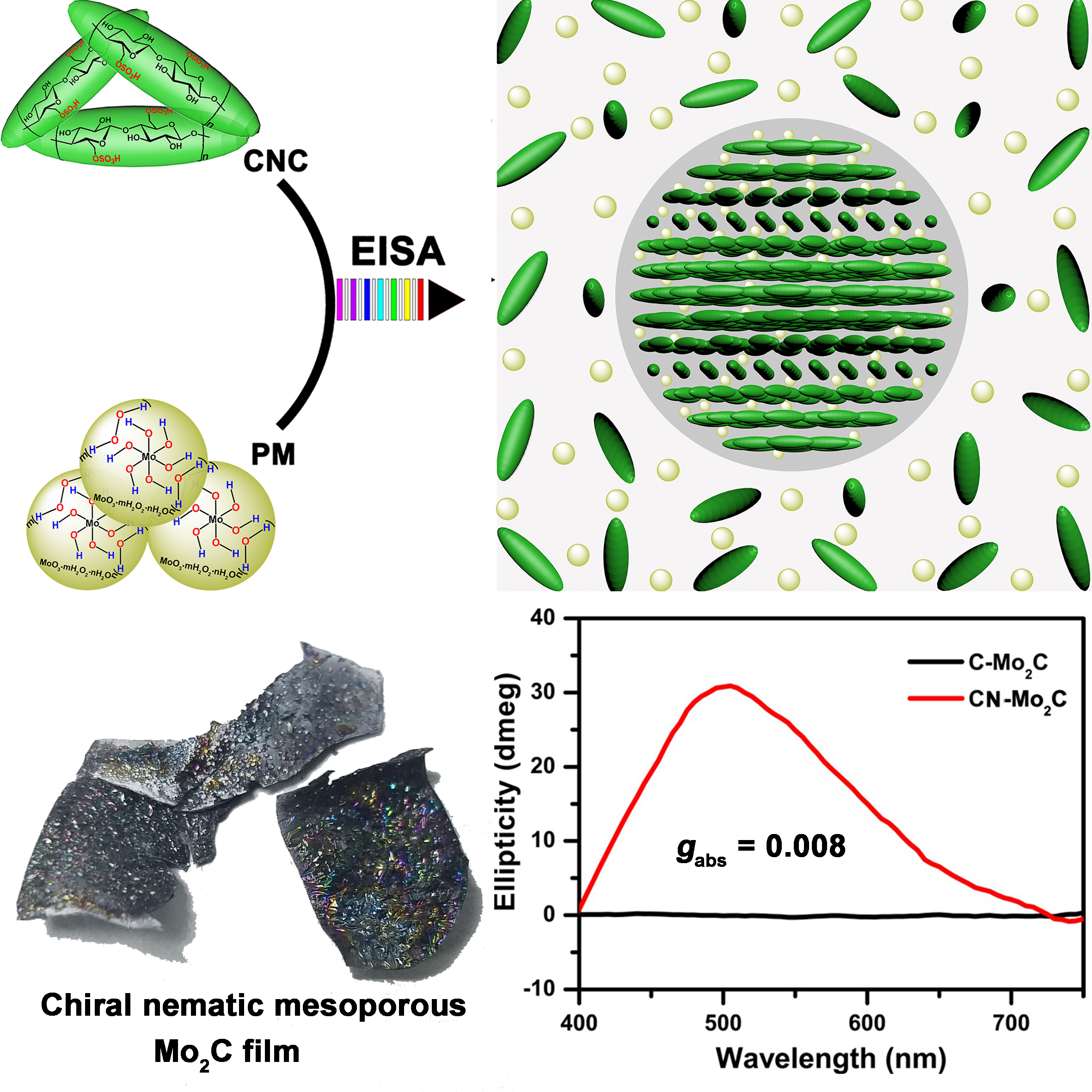基于结构导向的纤维素纳米晶(CNC)与过氧钼酸盐自组装,张福生等成功制备出一种手性向列介孔的钼化碳薄膜(CN-Mo2C)。通过改变两组分的比例,CN-Mo2C具有可调的手性向列结构,使表面积达到210 m2 g−1。更重要的是,通过偏振光学显微镜和圆二色光谱分析,此钼化碳显示出一种典型的手性光学特征。并且,CN-Mo2C具有良好的导电率,可达2.4✕10−2 cm−1。为此,我们尝试将CN-Mo2C用做电催化产氢气,它可以实现高效的H2生产能力。同时,这还是一种通用性的制备策略,可以方便地用于其他大面积宏观体手性金属基材料的合成。
Synthesis of optically active chiral mesoporous molybdenum carbide film
Fusheng Zhang, Xintong Zheng, Cunli Wang, Dongdong Wang, Xingya Xue, Guangyan Qing*
Journal of Industrial and Engineering Chemistry, DOI: 10.1016/j.jiec.2020.11.023

A chiral nematic mesoporous molybdenum carbide film (CN-Mo2C) was fabricated through the self-assembly of cellulose nanocrystal with peroxomolybdate. CN-Mo2C exhibits a tunable chiral nematic structure by varying the ratio of constituents, enabling a surface area of 210 m2 g−1. Importantly, it shows a typical chiroptical feature through polarized optical microscopy and circular dichroism spectral analysis. As it has an excellent conductivity of 2.4✕10−2 S cm−1, we try to use CN-Mo2C in the electrocatalytic HER production, presenting an efficient H2 production capacity. It is a versatile synthetic strategy that can conveniently enable other large-area macroscopic chiral metal-based materials.